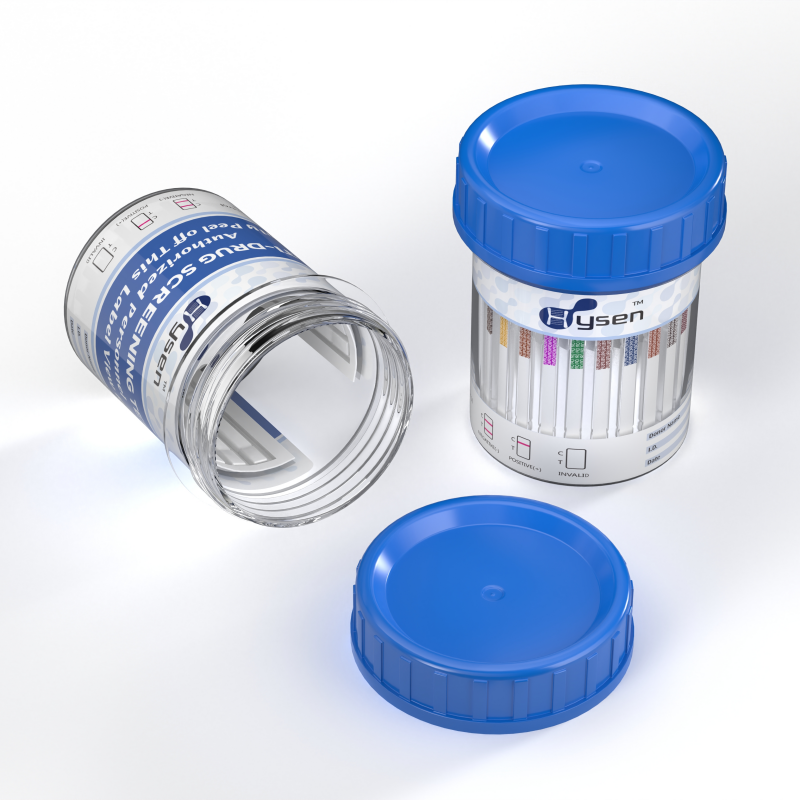Introduction to 510(k) Clearance for Drug Tests
The FDA's 510(k) clearance pathway is essential for drug tests looking to enter the U.S. market. This pathway is crucial, as it defines the eligibility criteria for medical devices, including drug testing kits, to be marketed legally. The process is not only about compliance but also about ensuring the safety and effectiveness of devices that consumers and healthcare professionals use.
Understanding the Importance
Drug tests under the 510(k) review are evaluated for their ability to produce accurate, reliable, and repeatable results. The importance of adhering to these guidelines is paramount in ensuring public health and protecting consumers from potentially ineffective or dangerous products.
Understanding Substantial Equivalence
Central to the 510(k) process is the concept of substantial equivalence. To gain clearance, a device must be shown to be substantially equivalent to an existing, legally marketed device, known as a predicate device.
Definition and Criteria
- A predicate device must have the same intended use as the new device.
- The technological characteristics should be similar, or any differences should not affect safety and effectiveness.
Demonstrating Equivalence
Manufacturers are required to submit detailed comparison data. This includes technological and performance characteristics that demonstrate the new device's similarity to the predicate device. Documenting these elements is crucial for the FDA's assessment and final determination.
Steps Involved in a 510(k) Submission
The submission of a 510(k) premarket notification is a detailed process requiring comprehensive documentation and adherence to FDA guidelines. Each step is designed to ensure that the device meets all regulatory requirements.
Initial Preparation
- Identification of a suitable predicate device.
- Compilation of detailed technical and performance data.
- Preparation of proposed labeling and instructions for use.
FDA Review Process
Once the submission is complete, the FDA typically takes about 90 days to review the documentation. This review period involves evaluating the substantial equivalence claims and ensuring the device's compliance with safety standards.
Criteria for Choosing Predicate Devices
Choosing an appropriate predicate device is critical for the success of a 510(k) submission. This decision impacts the entire review process and the likelihood of clearance.
Factors to Consider
- The predicate device must have a similar intended use and technological characteristics.
- It should have a well-documented history of safety and effectiveness.
Common Challenges
One common challenge is finding a predicate device with sufficient documentation. This can complicate the submission process and potentially delay clearance if the equivalence is not clearly demonstrated.
Technical Documentation Requirements
Comprehensive technical documentation is a cornerstone of the 510(k) submission process. This documentation demonstrates the device's safety and effectiveness compared to the predicate device.
Essential Documentation Components
- Performance testing data, including clinical and non-clinical studies.
- Biocompatibility research and sterilization data.
- Proposed device labeling and usage instructions.
Importance of Thoroughness
Lack of detailed documentation can lead to submission delays or rejections. Thorough documentation is crucial for establishing the device's credibility and reliability to the FDA.
Role of FDA's Quality System Regulation
The FDA's Quality System Regulation (QSR) is vital in ensuring that devices are consistently produced and controlled according to quality standards.
Overview of QSR
Found in 21 CFR Part 820, the QSR outlines the necessary procedures and processes that manufacturers must follow to maintain quality and safety throughout the product lifecycle.
Impact on 510(k) Submissions
Adherence to QSR ensures that the manufacturing process does not compromise the device's performance. It also prepares manufacturers for potential post-clearance inspections by the FDA.
Challenges and Considerations in the 510(k) Process
While the 510(k) pathway offers a streamlined market entry for drug tests, several challenges can arise during the submission process.
Regulatory Challenges
- Meeting the stringent documentation and equivalency requirements can be demanding.
- The FDA's evolving guidelines may necessitate updates to submission strategies.
Market Considerations
Manufacturers must consider market competition and the need for customization in their drug tests to ensure a competitive edge within the wholesale and retail markets. Factors such as cost, accessibility, and factory production capabilities can significantly impact the device's success post-clearance.
Third-Party Review in the 510(k) Process
The third-party review program, also known as the Accredited Persons Program, is an alternative review pathway for certain devices.
Benefits of Third-Party Review
- Faster review times for eligible devices.
- Potentially lower submission costs.
Evaluation and Limitations
Not all devices are eligible for third-party review. Eligibility depends on the device's risk classification and the availability of accredited third-party reviewers. This pathway can streamline the process for low-risk devices, freeing up FDA resources for higher-risk evaluations.
Policy and Regulation Updates
Staying informed about policy and regulatory updates is crucial for manufacturers seeking 510(k) clearance.
Recent Changes
- Amendments to the FD&C Act to accommodate technological advancements, such as AI in drug tests.
- Increased emphasis on cybersecurity measures in device submissions.
Future Outlook
Regulatory bodies are anticipated to continue refining the 510(k) process to address emerging technologies and safety concerns. Manufacturers need to remain agile and proactive in responding to these changes.
Future of 510(k) Clearance and Regulatory Trends
The future landscape of 510(k) clearance processes is poised for significant changes, driven by technological advancements and increased regulatory scrutiny.
Emerging Technologies
- The integration of AI and machine learning in drug tests is expected to reshape regulatory requirements and evaluation criteria.
- Manufacturers will need to adapt their quality systems and factory processes to accommodate these changes.
Regulatory Trends
Regulatory trends indicate a shift towards more data-driven assessments and customized evaluation pathways, allowing for more personalized and efficient clearance processes.
Hysen Provide Solutions
Hysen offers comprehensive solutions to facilitate your 510(k) clearance process. By leveraging our quality management systems, customization services, and industry expertise, we help manufacturers streamline their submissions, ensuring compliance and efficiency. Our solutions are designed to meet the unique demands of your drug testing products, from factory production to wholesale and retail markets. Partner with Hysen for a seamless 510(k) clearance experience.
User hot search: 510K Drug Test
Post time: Aug-30-2025
















